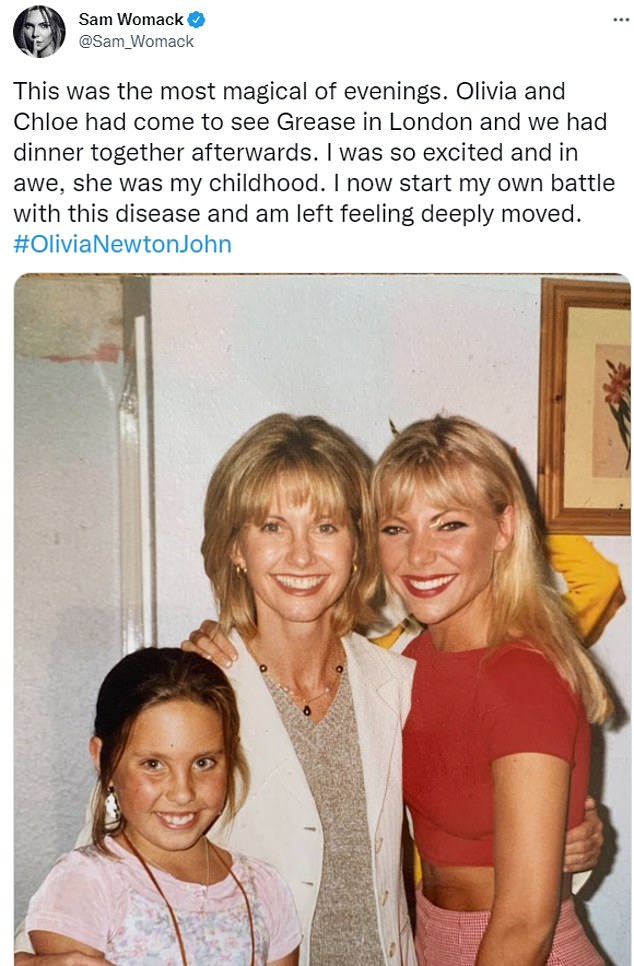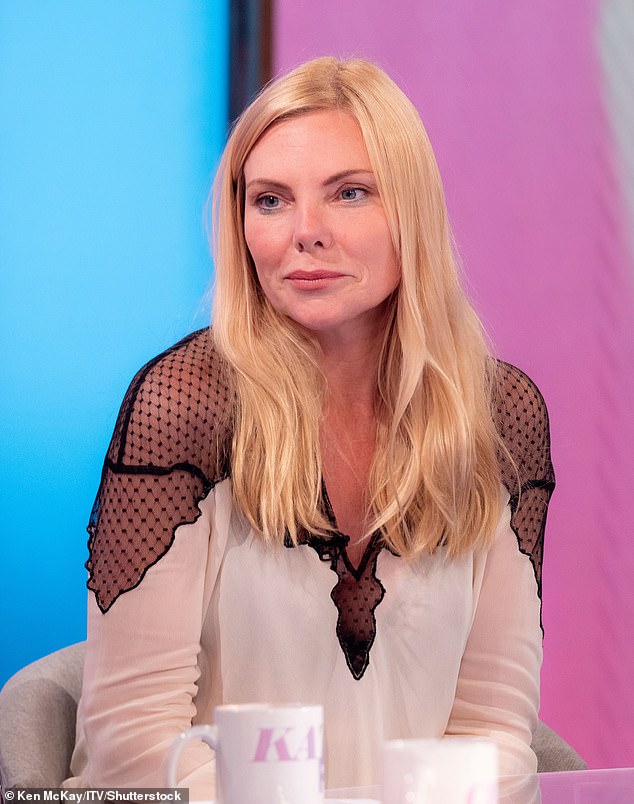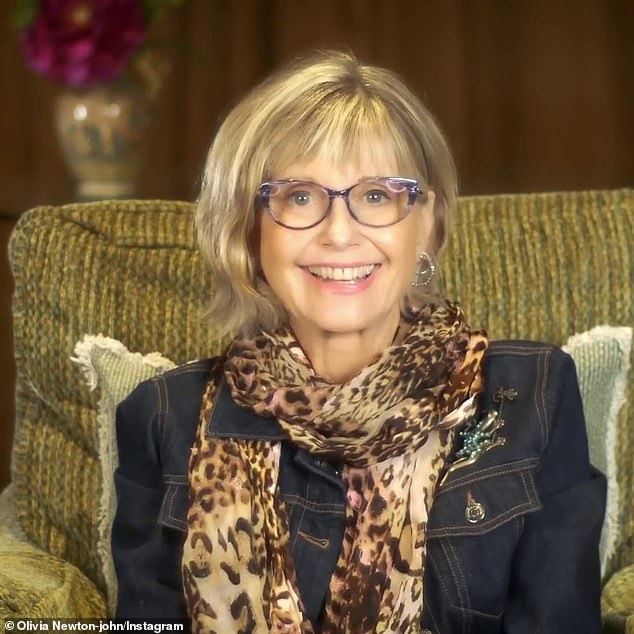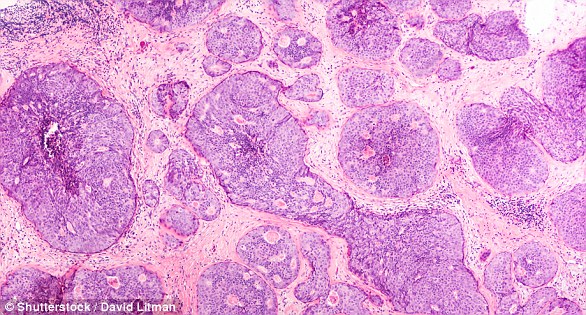
EastEnders legend Samantha Womack has been diagnosed with breast cancer.
The soap star, 49, announced that she she’d ‘started her own battle’ with the disease as she paid tribute to Olivia Newton-John, who died on Monday morning aged 73 after long fight with cancer.
In her tribute she shared a picture of the pair alongside Olivia’s daughter Chloe taken in 1993 when Samantha had played Sandy in the West End production of Grease.

Candid: Ex-EastEnders star Samantha Womack revealed she has breast cancer as she paid tribute to the late Olivia Newton-John in a 1993 image with the late actress and her daughter Chloe
Samantha captioned the image: ‘This was the most magical of evenings. Olivia and Chloe had come to see Grease in London and we had dinner together afterwards.
‘I was so excited and in awe, she was my childhood. I now start my own battle with this disease and am left feeling deeply moved. #OliviaNewtonJohn.’
Samantha, who famously played Ronnie Mitchell in EastEnders from 2007 to 2017, was immediately flooded with messages of support from her celebrity friends.
Referencing the star’s upcoming stint in the West End production of The Lion, The Witch and the Wardrobe, comedian Shappi Khorsandi penned: ‘Sending the most brilliant White Witch support and love x’
This Morning’s soap expert Sharon Marshall tweeted: ‘Wishing you love and strength ❤️’, while actress Lucia Keskin added: ‘Sending strength. Love you loads!!!!!! ❤️❤️❤️❤️.’




Heartbreaking: Samantha, who shares children Benjamin, 21, and Lili Rose, 17, with ex-husband Mark, offered no further details on her diagnosis (pictured in July 2022)












Reaching out: Samantha was immediately flooded with messages of support from her celebrity friends
Samantha, who shares children Benjamin, 21, and Lili Rose, 17, with ex-husband Mark, offered no further details on her diagnosis.
The star recently discussed her complicated family life as she revealed she was ‘proud’ that she is able to speak to her ex-husband, who she split from in 2020, ‘two or three times a day.’
She said: ‘Mark and I raised a family really well, so we agreed that we didn’t mind separating in terms of a traditional marriage, but actually I would really have suffered if we hadn’t maintained a friendship, because that was part of my life for 20 years.
‘We speak to each other two or three times a day, Mark will say, “Can I pop round next week – can you have the two Chihuahuas?” and I’ll say, “Yeah, but can you have the cat next week?”‘






Iconic: Samantha famously played Ronnie Mitchell in EastEnders from 2007 to 2017 (pictured right alongside on-screen sister Roxy, played by Rita Simons)
Samantha is currently dating former Coronation Street actor Oliver Farnworth, 39, and the pair live together in Spain, after relocating to Valencia at the start of the year.
Her candid post came after Olivia died following a 30-year battle with breast cancer.
Olivia, who shot to international stardom thanks to her role as Sandy in the 1978 movie Grease, died surrounded by family at her home in southern California after a long battle with breast cancer.
Her husband revealed the actress’ final request was for donations to be made to the Olivia Newton-John Foundation Fund, ‘in lieu of flowers’.
The foundation funds research into plant-based medicine and holistic treatments for cancer.






Heartbreaking: Olivia died on Monday following a 30-year battle with breast cancer, in a final video posted just before Christmas, Olivia thanked her fans for their support over the years
In a final video posted just before Christmas, Olivia thanked her fans for their support over the years.
‘I just wanted to take this opportunity to wish all a primarily healthy, happy, peaceful Christmas,’ she said.
I know it’s been a very, very, very difficult time for everybody in the whole planet – so this is a time we can get together, celebrate each other and our families and whatever faith that you believe in we can express it with each other which is very important.
‘I want to thank you all for all of your support over the years and I wish you all the best and send you love and light.
Olivia’s battle with breast cancer first began in 1992 when she was just 44 years old. She was very open about her diagnosis and treatment, which famously included the use of medical marijuana.
Her cancer returned in 2013 and again in 2017.
The Macmillan Support Line offers free, confidential support to people living with cancer and their loved ones. Call 0808 808 00 00 for support
Source: | Dailymail.co.uk

